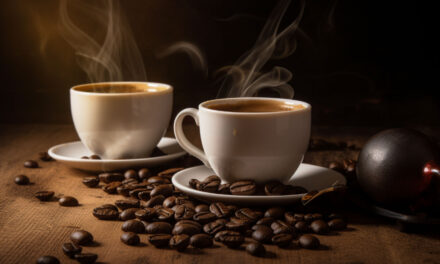After discussing various expressions of espresso machine in ristretto, espresso, and lungo, we will continue our journey into the art of espresso which encompasses the classic coffee menus based this machine. The scope of espresso-based drinks is too much to be put into single article. To make it more bite-size, we will divide it into multiple-part series where we’ll delve into the rich history, fascinating origins, and distinct characteristics of some of the most popular espresso-based beverages. In this first installment, we’ll explore the classics – drinks that have stood the test of time and have become staples in coffee shops around the world.
Espresso
Espresso, the heart of all espresso-based drinks, was born out of necessity. In the early 20th century, Italian workers needed a quick coffee break, so the espresso machine was invented to speed up the brewing process. This involves forcing a small amount of nearly boiling water under pressure through finely-ground coffee beans. The outcome is a thicker, creamier coffee with a higher concentration of suspended and dissolved solids. Espresso is the foundation of all other drinks on this list. It’s the essence of coffee, captured in a cup.
Americano
The Americano, or “American coffee”, is a style of coffee prepared by adding hot water to espresso, giving it a similar strength to, but different flavor from, regular drip coffee. The strength of an Americano varies with the number of shots of espresso and the amount of water added. The name is said to have originated as a bit of an insult to Americans, who had to dilute their espresso when they were in Italy during the Second World War. Although, this is highly unlikely to be true because the espresso machine itself wasn’t invented until well after the war (in 1948). But don’t let that put you off – the Americano is a bold, beautiful beverage that’s as versatile as it is delicious.
Long Black
The Long Black, often considered the twin sibling of the Americano, is a style of coffee most commonly found in Australia and New Zealand. It’s similar to the Americano, but with a stronger aroma and taste. The key difference lies in the preparation. For a Long Black, the hot water is poured into the cup first, and then the espresso or ristretto is added on top. This method retains the crema and thought to help preserve the coffee’s flavor. The Long Black is for those who prefer their coffee black, with a robust flavor that’s sure to wake up your taste buds.
Latte (Caffé Latte)
The Latte is a delightful mixture of espresso and steamed milk. The name “latte” is derived from the Italian “caffè latte”, which simply means “milk coffee”. Though the word ‘latte’ is already synonymous with the drink, the literal Italian translation of the word is ‘milk’. I’ve heard anecdotal stories of Italian baristas serving tourists milk when they ordered latte, just to make a point in calling the drink by its proper name ‘Caffe Latte’. Regardless of how you call it, this drink is a soothing, creamy beverage that’s perfect for those who enjoy the flavor of coffee but prefer a less intense experience. The caffe latte is characterized by its large milk to coffee ratio, which often ranges from 1:4 to 1:7 and decorated by the beautiful ‘latte art’.
Flat White
The Flat White, hailing from Australia and New Zealand, is a coffee drink that consists of espresso topped with steamed milk. The Flat White is similar to a caffe latte, but served in a smaller cup with less foam, which allows the espresso to take the center stage. The ratio of coffee to milk is higher (ranging from 1:2 to 1:4), resulting in a stronger coffee flavor compared to a latte. It’s a drink that showcases the harmony between coffee and milk, a soothing blend that softens the espresso’s intensity without diluting its flavor.
Macchiato
Macchiato, translated into English as ‘marked’ or ‘stained’, was born in the busy espresso bars in Italy. The mark is originally used to differentiate espressos that have been added a dash of milk, for the crema on top often disguise them with the ones without. However, this tradition has evolved over time, with modern versions often featuring a 1:1 ratio of coffee to milk, often an espresso cup filled to the brim with steamed milk. Both versions can be very enjoyable; however, the essence of the Macchiato remains the same – a marked espresso.
Conclusion
From the bold intensity of the Espresso to the marked distinction of the Macchiato, each drink offers a unique experience that caters to different tastes and preferences. As we wrap up this first part, we hope you’ve gained a deeper understanding on these classic beverages. In the second part of this series, we’ll continue our exploration into the continent beyond the classics.




